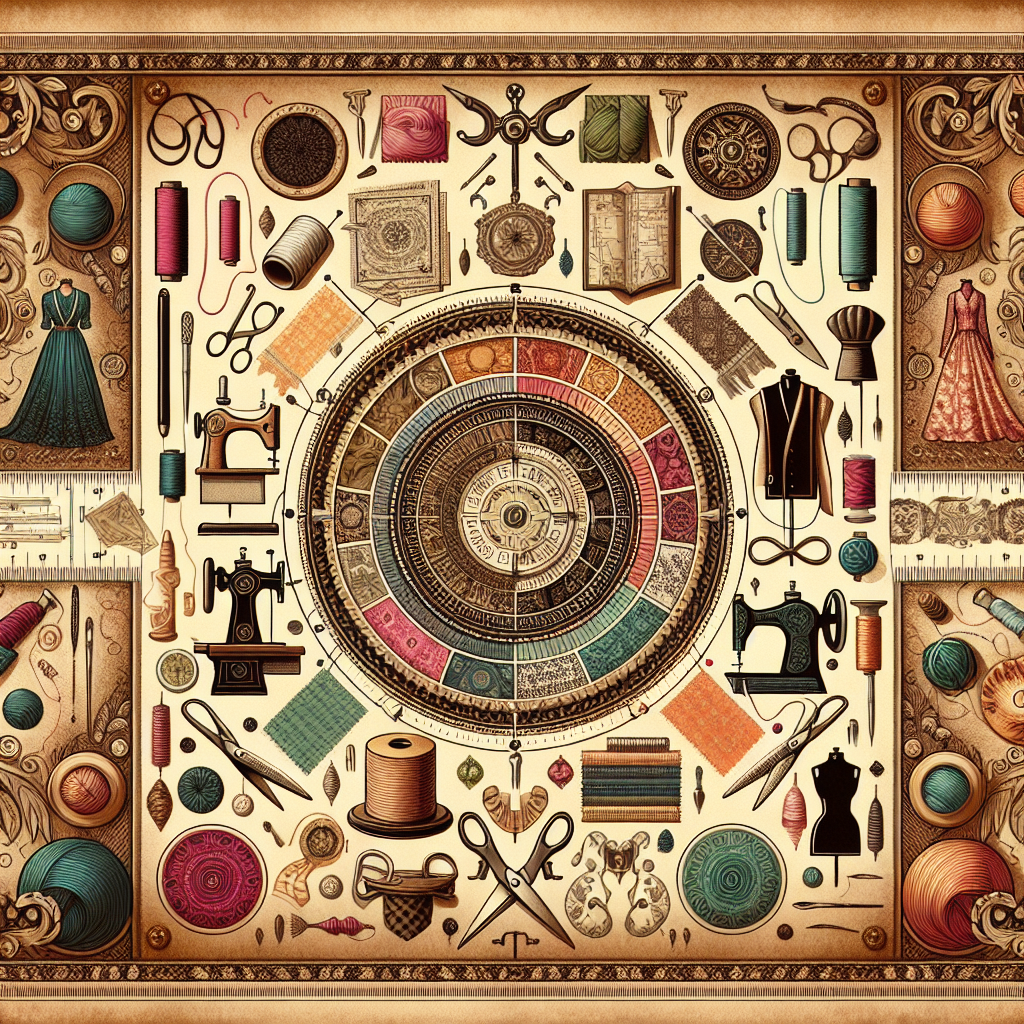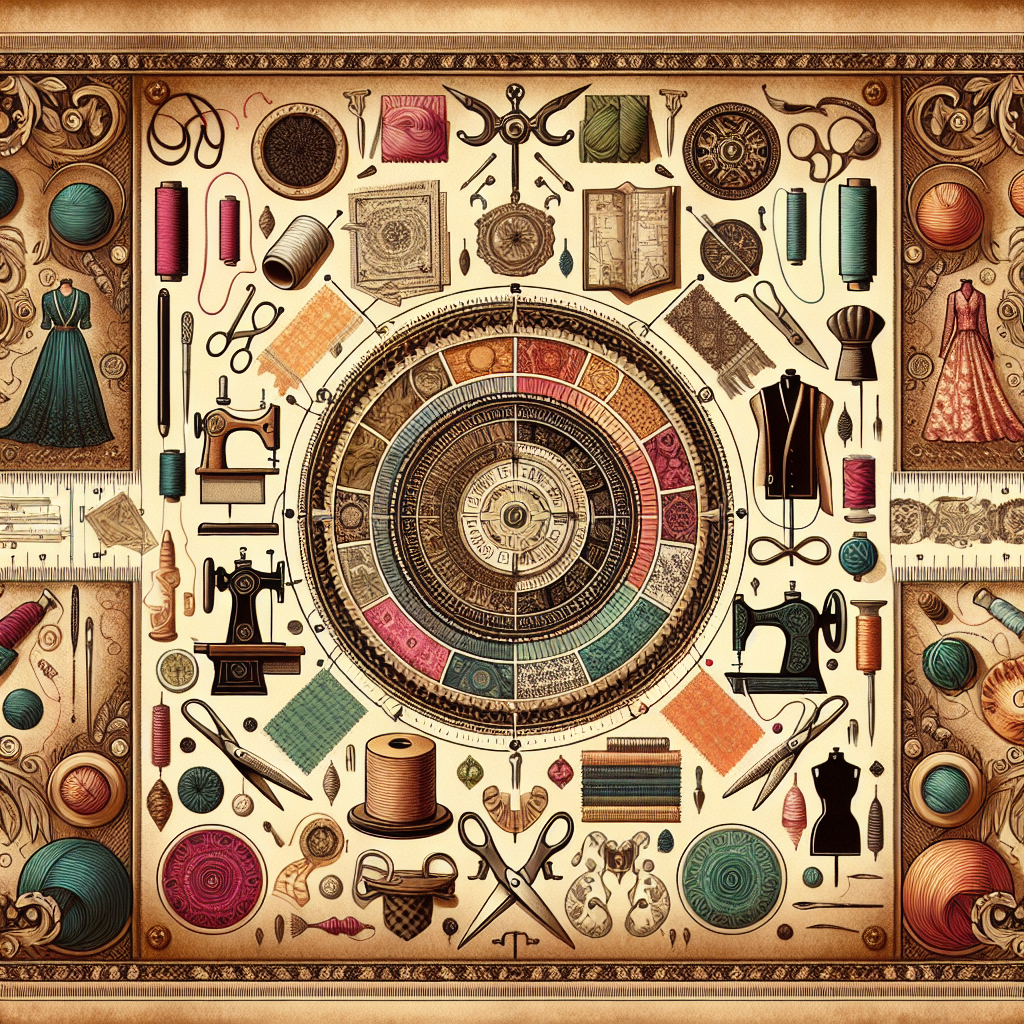Are you curious about the diverse world of sewing professionals? Look no further! In this article, we will explore the fascinating realm of sewing and discover the ten distinct types of professionals that contribute their skills and expertise to this craft. From tailors and seamstresses to pattern makers and textile artists, these individuals bring creativity and precision to the art of stitching. Join us as we unravel the intricacies of this vibrant industry and gain a deeper understanding of the various roles that make up the tapestry of sewing professionals. Prepare to be inspired!

Fashion Designer
Head Designer
The head designer is the creative mastermind behind a fashion brand or label. They are responsible for leading the design team, developing the overall vision and concept for each collection, and overseeing the entire design process. They work closely with clients, marketing teams, and production staff to ensure the final product meets the brand’s standards.
Assistant Designer
The assistant designer plays a crucial role in supporting the head designer. They assist with research, sketching, and creating technical drawings. They also collaborate with suppliers, technicians, and patternmakers to ensure the designs are translated accurately into finished garments. The assistant designer is responsible for managing the design studio, organizing and maintaining design samples, and staying updated on the latest industry trends.
Patternmaker
Patternmakers are skilled professionals who specialize in creating the templates or patterns for garments. They use various techniques, such as draping, flat patterning, and computer-aided design (CAD), to accurately translate the designer’s sketches or concept into the physical form of a garment. Patternmakers have a deep understanding of garment construction and are responsible for ensuring proper fit, proportion, and functionality in the final product.
Sample Maker
Sample makers bring the patterns to life by sewing the initial garment prototypes. They work closely with the patternmakers and designers to assemble the garments and make any necessary adjustments for fit and design details. Sample makers are highly skilled in sewing techniques and often work under tight deadlines to ensure the timely completion of sample garments for fashion shows, photo shoots, and buyer presentations.
Technical Designer
Technical designers bridge the gap between design and production. They work closely with the design team to develop detailed technical specifications, including measurements, construction methods, and material requirements. Technical designers collaborate with patternmakers, sample makers, and manufacturers to ensure the designs are executed accurately and meet quality standards. They also play a crucial role in resolving any fit or construction issues that may arise during the production process.
Costume Designer
Theatrical Costumer
Theatrical costumers design and create costumes for stage productions, including plays, musicals, operas, and dance performances. They work closely with directors, choreographers, and performers to bring characters to life through their costumes. Theatrical costumers must have a deep understanding of historical periods, cultural references, and storytelling, as well as practical considerations like movement and durability on stage.
Film and TV Costumer
Film and TV costumers are responsible for designing and creating costumes for movies, television shows, and commercials. They collaborate closely with directors, production designers, and actors to develop costumes that enhance the visual storytelling and bring the characters to life. Film and TV costumers must be skilled in both historical and contemporary costume design, as well as the use of specialized materials and techniques for on-screen appearances.
Historical Costumer
Historical costumers specialize in creating period-specific garments and costumes for historical reenactments, museums, and cultural events. They have extensive knowledge of different historical eras, including the appropriate fabrics, construction methods, and embellishments for each period. Historical costumers often conduct thorough research to ensure the authenticity and accuracy of their designs, taking into account cultural and social factors that may influence the clothing of the time.
Tailor
Custom Tailor
Custom tailors create made-to-measure garments tailored specifically to individual clients’ measurements and preferences. They work closely with clients to understand their style preferences, body proportions, and specific needs. Custom tailors are skilled in advanced fitting techniques and garment construction to create garments that fit perfectly and enhance the client’s appearance. They often work in small studios or shops, offering personalized services and craftsmanship.
Alteration Specialist
Alteration specialists focus on tailoring existing garments to fit clients’ bodies properly. They are skilled in a wide range of alteration techniques, such as hemming, taking in or letting out seams, adjusting sleeve lengths, and making adjustments to achieve the desired fit. Alteration specialists work with clients on an individual basis, ensuring their garments are tailored to their unique body shapes and proportions.
Bespoke Tailor
Bespoke tailors offer the highest level of custom tailoring, providing fully handcrafted garments made from scratch to clients’ individual specifications. They start with detailed measurements and design consultations, working closely with the clients to create unique garments that reflect their personal style. Bespoke tailors are highly skilled in patternmaking, fabric selection, and fine sewing techniques, resulting in exquisite garments tailored to perfection.
Patternmaker
Clothing Patternmaker
Clothing patternmakers specialize in creating patterns for various types of garments, including dresses, tops, pants, and skirts. They work closely with designers, translating their sketches or ideas into precise patterns that can be used for production. Clothing patternmakers are skilled in analyzing and manipulating different fabric types, understanding how they drape and behave, to ensure the patterns result in well-fitting and visually appealing garments.
Home Décor Patternmaker
Home décor patternmakers focus on creating patterns for items used in interior design, such as curtains, pillows, and upholstery. They collaborate with interior designers and manufacturers to develop patterns that match the desired aesthetic and functionality of the space. Home décor patternmakers must have a keen eye for color, texture, and scale, as well as a solid understanding of different textile printing and production techniques.
Quilter
Art Quilter
Art quilters create intricate and expressive quilts that are considered works of art. They experiment with various quilting techniques, such as appliqué, free-motion quilting, and fabric painting, to create unique and visually stunning pieces. Art quilters often draw inspiration from nature, cultural motifs, or personal experiences, resulting in quilts that convey emotion and tell stories through their intricate designs.
Traditional Quilter
Traditional quilters focus on preserving and honoring traditional quilting techniques and patterns handed down through generations. They create quilts using historic patterns, such as log cabin, nine patch, or Dresden plate, and often rely on precise hand sewing and piecing methods. Traditional quilters celebrate the heritage and craftsmanship of quilting, often creating quilts that serve as heirlooms or cherished gifts.
Longarm Quilter
Longarm quilters use specialized sewing machines called longarm machines to create intricate quilting designs on large quilts. They work with an extended machine frame, allowing them to move the quilt under the needle while creating complex patterns or custom designs. Longarm quilters can offer unique quilting services, enhancing the overall aesthetic of quilts with their precise stitching and intricate motifs.
Seamstress
Home Seamstress
Home seamstresses work from their own sewing studios or homes, offering a variety of sewing services to clients. They may focus on general alterations, repairs, or custom garments for individuals in their local communities. Home seamstresses often provide personalized attention and craftsmanship, catering to clients who appreciate the convenience and quality of individualized sewing services.
Garment Seamstress
Garment seamstresses work within the fashion industry, specializing in sewing garments for production. They may be employed by small fashion brands or large manufacturing companies, contributing to the mass production of clothing. Garment seamstresses must be skilled in using industrial sewing machines and following production guidelines to ensure consistent quality and productivity.
Embroiderer
Hand Embroiderer
Hand embroiderers specialize in creating intricate embroidery designs by hand. They often use specialized techniques, such as needlepoint, crewelwork, or goldwork, to create detailed and ornate motifs on fabric. Hand embroiderers can work on a wide variety of projects, including garments, home décor items, and accessories, adding a personalized touch and artistic flair through their meticulous embroidery.
Machine Embroiderer
Machine embroiderers use computerized embroidery machines to create intricate and precise embroidery designs. They work with digital files or software to program the machine, which then embroiders the design onto fabric or other materials. Machine embroiderers can produce large quantities of embroidered products efficiently, making their services valuable to both large-scale manufacturers and individuals seeking custom embroidery.
Embroidery Designer
Embroidery designers are creative professionals who develop unique embroidery designs that can be used in various applications. They may create digital files or hand-drawn sketches, which can be used by embroiderers to reproduce the designs on different surfaces. Embroidery designers often draw inspiration from different cultures, artistic movements, or personal experiences, resulting in visually captivating and innovative embroidery designs.
Couturier
High-Fashion Couturier
High-fashion couturiers create one-of-a-kind garments for exclusive clients who appreciate the highest level of craftsmanship and design. They focus on using luxury fabrics, intricate embellishments, and couture sewing techniques to create exquisite garments that showcase their artistic vision. High-fashion couturiers often work on custom orders and collaborate closely with clients to bring their dream garments to life.
Haute Couture Designer
Haute couture designers belong to distinguished fashion houses that produce collections using traditional couture techniques. These designers create garments that are handmade to the highest standards, using luxurious fabrics, meticulous hand-sewing, and lavish embellishments. Haute couture designers showcase their collections during exclusive fashion events and cater to a clientele that values the epitome of luxury and craftsmanship.
Dressmaker
Wedding Dressmaker
Wedding dressmakers specialize in creating custom wedding gowns tailored to the bride’s preferences and vision. They work closely with brides to design and bring their dream dresses to life, taking into consideration the bride’s body shape, style, and wedding theme. Wedding dressmakers often incorporate intricate lacework, beading, and fine details to create stunning dresses that make the bride feel beautiful on her special day.
Evening Gown Dressmaker
Evening gown dressmakers focus on creating elegant and sophisticated gowns for formal occasions, such as galas, red carpet events, or black-tie parties. They work closely with clients to understand their personal style and the event’s dress code, designing unique and memorable gowns that make a statement. Evening gown dressmakers have expertise in using luxurious fabrics, draping techniques, and intricate details to create show-stopping dresses.
Casual Dressmaker
Casual dressmakers specialize in creating everyday garments for both men and women. They design and sew comfortable and stylish pieces, such as dresses, tops, pants, and skirts suitable for various occasions. Casual dressmakers often work with clients who value sustainable and slow fashion, prioritizing custom-fit, quality materials, and unique designs that reflect their personal style and values.
Upholsterer
Automotive Upholsterer
Automotive upholsterers focus on repairing or customizing the interiors of cars, trucks, and motorcycles. They work with different types of materials, such as leather, vinyl, or fabric, to create or refurbish seats, headliners, door panels, and trim. Automotive upholsterers require specialized knowledge of automotive upholstery techniques, including sewing, foam shaping, and patternmaking, to ensure a precise fit and durable finish.
Furniture Upholsterer
Furniture upholsterers specialize in reupholstering and repairing furniture, such as chairs, sofas, and ottomans. They work with various fabrics, foam, and padding to restore or transform furniture pieces, giving them a fresh and updated look. Furniture upholsterers may also create custom furniture pieces, collaborating with designers and clients to realize unique designs tailored to their specific needs and style preferences.
In conclusion, the world of sewing professionals is diverse and multifaceted. From the creative minds of fashion designers to the skilled hands of tailors, patternmakers, quilters, seamstresses, embroiderers, couturiers, dressmakers, and upholsterers, each professional brings a unique set of skills and expertise to their craft. Whether it’s creating high-fashion garments, designing intricate quilts, or bringing historical costumes to life, these sewing professionals play a vital role in the fashion and textile industry. Their dedication, creativity, and attention to detail ensure that garments and textile products are not just functional but also works of art. So, whether you’re in need of a custom garment, a beautifully upholstered piece of furniture, or a unique quilt, rest assured that the talented and passionate sewing professionals are there to bring your vision to life with skill and creativity.

